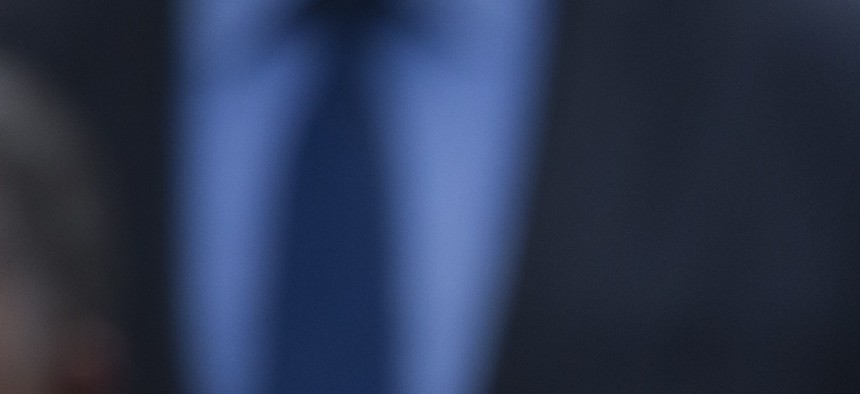
Russian President Vladimir Putin takes part in a wreath laying ceremony at the Tomb of the Unknown Soldier outside Moscow's Kremlin wall, on June 22, 2014. Alexander Zemlianichenko/AP
Who Needs Sanctions? Oil, Gas Markets Are Hitting Moscow
Threats of more sanctions come at a time when Putin is being punished by a surge in supplies of gas and oil, its main exports. By Steve LeVine
With the failure of an ultimatum to bring calm to Ukraine, the West may impose new sanctions on Russia, but if so they will come at a time that Moscow is already being undercut by a surge in supplies of gas and oil, its main exports.
The US and the European Union had given Russian president Vladimir Putin until June 30 to quiet the fighting in eastern Ukraine. German chancellor Angela Merkel today softened the threat, saying that the EU “cannot rule out” further sanctions.Her remarks came a day after the EU said it will take no new action against Russia until at least next week, along with pressure on US president Barack Obama from business groups that oppose new sanctions.
But even short of new financial penalties, Putin is under separate attack—from oil and gas markets, which are inadvertently punishing him.
Oil prices are falling
Russia relies on oil and gas export income to cover about half of the state budget, and crude prices today continued a decline. The main factor in that drop is reduced worries about a loss of Iraqi supplies. But an underpinning factor is the law of supply and demand—the specter of US oil exports, a new supply of Iraqi Kurdish crude and, if Iran strikes a nuclear deal and international sanctions are eased, a potential surge of 700,000 barrels a day of revived Iranian shipments (paywall). In addition, two ports reopened today in Libya, raising hopes of renewed exports of some 500,000 barrels of oil a day from there as well.
Oil prices remain high, which is largely because geopolitical and other disruptions such as the Libya trouble have been keeping some 3.5 million barrels of production capacity off the market. But to the degree that the trend chips away at this idle volume, prices will continue to fall and hurt the budgets of the world’s petro-states, including Russia’s.
And natural gas prices are dropping, too
Already, US natural gas—sold well below European and Asian rates—is forcing Putin to reduce his export prices.
As illustration, a recent 20-year deal for liquefied natural gas (LNG) between BP and China’s Cnooc is linked to a formula based on US supply and prices, plus oil prices. The precise formula was not announced but with US prices currently at about $4.39 per 1,000 cubic feet, prices seem likely to stay well below the $13-per-thousand-cubic-feet rate paid currently by Japan. As Michael Levi points out at the Council on Foreign Relations, the deal terms are similar to a contract struck last year between BG and Cnooc that was also linked to US prices.
These deals highlight why Putin decided in May to cave in and sign a monster natural gas contract with China at a cut-rate price. The price wasn’t disclosed but is thought to be around $10 per 1,000 cubic feet, below what Russia earns on sales to Europe, its main market. The western pressure in Ukraine loomed large in Putin’s acquiescence to the lower price, but the specter of US gas hung over the negotiations and forced his hand as well.
The future doesn’t look rosier, either
Moscow said this week that it’s discussing yet another big gas supply deal with China, and the BP agreement suggests that it will again have to offer a relatively low price. But it may have to go even lower than it did in May: Japan, the world’s largest buyer of LNG, appears likely to restart nuclear power plants, which would reduce its gas appetite and thus reinforce the downward price trend. An Indonesian gas deal announced June 30 suggests that Asian LNG prices will drop below $10 per 1,000 cubic feet.
An interesting point is that not a drop of US gas has actually left its shores as yet, and won’t until the second half of next year—the price impact as of now is based entirely on boomerang effects. When the gas actually hits the market, the effect on prices could be amplified.
NEXT STORY: The Rise and Fall of Our Man in Baghdad
